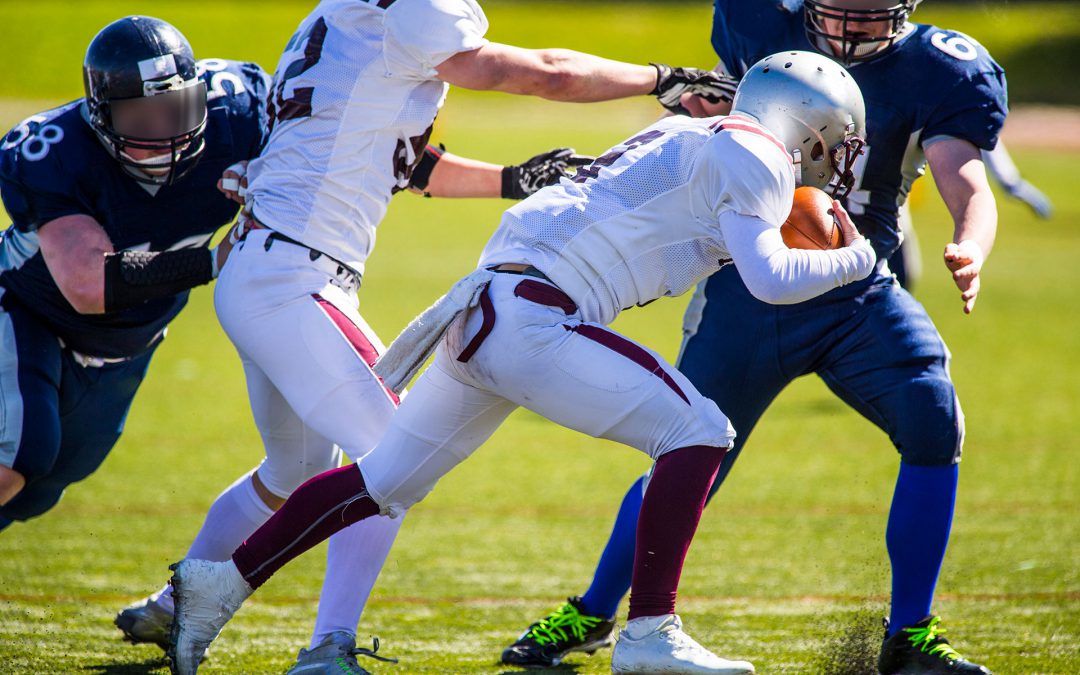Dr. Charles L. Rosen, Neurosurgeon in Morgantown, WV, discusses fall sports and consussions.
Something parents are concerned about are concussions in children. Two sports in particular: soccer and football, obviously football even more so. I hate the word concussion. It sounds like it’s, it’s not a big deal, “oh, I just had a concussion.” We should really be talking about traumatic brain injury because that’s what a concussion is. A concussion is when your child or your own head is hit so hard that the brain actually stops functioning, whether it be briefly or for a longer period of time. To hit your head hard enough that the brain stops working, that’s concerning and we shouldn’t just say, “oh, it’s just a concussion.” By the same token, I don’t think that we should take our children and wrap them in bubble wrap and kiss, and sit him on the couch and not live their lives. So what does a parent should we be doing to ensure our children have the best opportunity to enjoy themselves, but also be safe?
First is just common sense stuff. Good training, you know the coaches who have not gotten up to speed and are allowing children to tackle each other with their heads or people who are allowing inappropriate play to occur. I mean this stuff you have to be diligent about and protect your child and not let these situations occur, but with proper organized sports, the chance of something devastating happening is obviously very, very, very low. We do worry about, well, what about all these small little hits and the cumulative effect of all these small little hits and when is this going to be a problem? To the best we can tell, there seems to be differential susceptibility to that. Meaning that there’s a small group of people and we don’t know how to identify those children, those people in advance, but there’s a small group of people who are more sensitive to frequent hits.
What that means is the vast majority of us with normal play go on to grow up and be normal adults without problems. But unfortunately we learn more and more and seeing the news on a regular basis, star athletes in high school, college, and professionals who are suffering terribly as a consequence of concussions and repetitive injury, in particular. My advice to other parents is one, most organized sports will have your children tested for their neurologic function before they’re allowed to participate in those sports. And then if should anything occur during the activities, they will be immediately tested to ensure no change in their function. No child should be allowed to participate in sports, while they’re currently suffering the effects of a concussion or traumatic brain injury. And I believe strongly on erring on the side of protecting the child. To put your child’s brain at risk because they’re a great player in this junior high school football game, that doesn’t make a lot of sense to me.
So sit it out, wait until they’re okay, wait until they completely symptom-free. Even wait a game or two, depending upon the severity. I don’t want to go over the specifics because a video is not the proper way for you to learn this, but there are specific protocols, test and times that you’re supposed to use before allowing children back to play. By the same token, I have been at the sideline, one instance was a girl who ran into the ref or actually the ref really ran into her. She took an elbow to the side of the head, got a big goose egg over her eye. It really hurt a lot. She was crying, but actually, neurologically she was totally fine. She had no double vision, no loss of consciousness, no problems with emotion behavior or anything like that, but nonetheless, even though this was a big game, end of season basketball game, I had her sit out until another quarter just to make sure everything was okay before letting her go back and play.
That was an example in basketball, but the same is true for soccer and football. One thing I’d like to talk about in soccer is the big risk in soccer is not actually heading the ball. Heading the ball is receiving attention these days as it should, I mean striking the ball with your head doesn’t seem like the smartest way to protect your head, but actually, the incidents of injury is probably on the low side though, not zero. The bigger issue is collisions, more head injuries occur in soccer as a result of two people’s heads colliding. One head is hard, the other head is hard, the two bang into each other and that can actually result in significant injury. So even if your children are not allowed to head the ball as many are not these days, soccer still remains an at-risk sport because of the collisions. And that’s often the case with most sports.
Even, you know, we focus on things like football and rugby and other high collision sports where the collision is part and parcel of the sport. But in most sports, where there’s competition, collisions can sometimes be inevitable and it’s those collisions that often can result in concussion or traumatic brain injury. When talking about sports and sporting injuries, we often inappropriately think of boys first, and those of us with daughters know that that’s not the case, that the daughters are just at risk for injury. In fact, in sports like soccer, potentially cheerleading, the risk of collision and the head being struck is high. And so we have to look out for our daughters just as much as we look out for our sons.
Please note, the information provided throughout this site is not intended or implied to be a substitute for professional medical advice, diagnosis or treatment. All content, including text, graphics, images, and video, on or available through this website is for general information purposes only. If you are experiencing relating symptoms, please visit your doctor or call 9-1-1 in an emergency.
Read More from Dr. Charles Rosen
Multiple Aneurysms: Emilia Clarke
I'm getting a lot of questions these days about aneurysms and Emilia Clarke, the game of Thrones star, and the unusual aspect of her history is to having multiple aneurysms that needed care, so I wanted to talk a little bit about how often we see that. The...
read moreBrain Eating Amoebas
Last year I got asked a lot about the terrible tragedy related to the brain eating Amoeba or brain eating bug as it's called in the press. First off, these are relatively uncommon. They are horrific when they occur, but they're not common. What it is, is...
read moreHeat Stroke
With the temperature increasing, as a motorcyclist, I'm very aware of the issues of heat exhaustion and heat stroke, and these are very dangerous issues. Our bodies need to stay at a standard temperature (98.6 degrees Fahrenheit, 37 degrees Celsius), and...
read more



